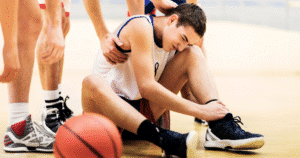
Youth sports provide countless benefits, from teamwork and discipline to physical fitness and confidence. But with the intensity of practices and games, sports injuries are a common part of the experience. For young athletes, the desire to return to the field or court as quickly as possible can sometimes outweigh the need for proper healing. Following established return to sport guidelines is essential to protect long-term health, reduce the risk of reinjury, and ensure safe performance. At OSMC, we help families and athletes navigate recovery so kids can return stronger and healthier.
Why Return to Sport Guidelines Matter for Young Athletes
When a child or teen suffers an injury, whether it’s a sprained ankle, a fractured bone, or a concussion, the body needs time to heal properly. Return to sport guidelines exist to ensure athletes recover safely before resuming competition. These guidelines provide a structured path that considers the type of injury, the severity, and the athlete’s age and development. Skipping steps in the recovery process may not only delay healing but also increase the likelihood of repeat injuries that could sideline an athlete for much longer.
Steps in the Return to Sport Process
The return to play process is gradual and carefully monitored. First, the injury must be evaluated and treated by a medical professional. Once pain and swelling are under control, athletes can progress to light, supervised activity. As strength, flexibility, and balance improve, the level of physical exertion increases. The final stages involve sport-specific drills, culminating in full participation. Each stage of these return to sport guidelines requires clearance from an orthopedic specialist to confirm that the injury has healed sufficiently. This step-by-step approach reduces risk and builds confidence in both the athlete and their parents.
Risks of Returning to Play Too Soon
The pressure to return quickly is often high, especially for competitive athletes who don’t want to miss games or disappoint teammates. However, returning before the body is ready can create serious setbacks. A poorly healed muscle, tendon, or ligament is more prone to reinjury. A fracture that hasn’t fully mended can break again under stress. Even concussions carry increased risks if another head injury occurs before the brain has fully recovered. Following proper return-to-sport guidelines allows athletes to safely rebuild strength and coordination, protecting them from long-term damage.
The Role of Orthopedic Specialists in Youth Sports Recovery
Orthopedic specialists play a vital role in evaluating injuries, overseeing recovery, and clearing athletes for safe return to play. At OSMC, our sports medicine providers use advanced imaging, personalized treatment plans, and sport-specific rehabilitation strategies to guide recovery. Families can trust that every stage of the healing process is monitored with the athlete’s safety and long-term goals in mind. By combining medical expertise with clear communication, orthopedic specialists ensure young athletes return to sports at the right time and in the right way.
Schedule Clearance with an Orthopedic Specialist
If your child has suffered a sports injury, don’t take chances by rushing the recovery process. Safe and effective return to sport guidelines are essential to long-term health and performance. The specialists at OSMC provide thorough evaluations, tailored recovery plans, and medical clearance when it’s truly safe to return.
Schedule a safe return to play appointment with an orthopedic specialist at OSMC today and give your young athlete the best chance for a safe and triumphant return to play.


